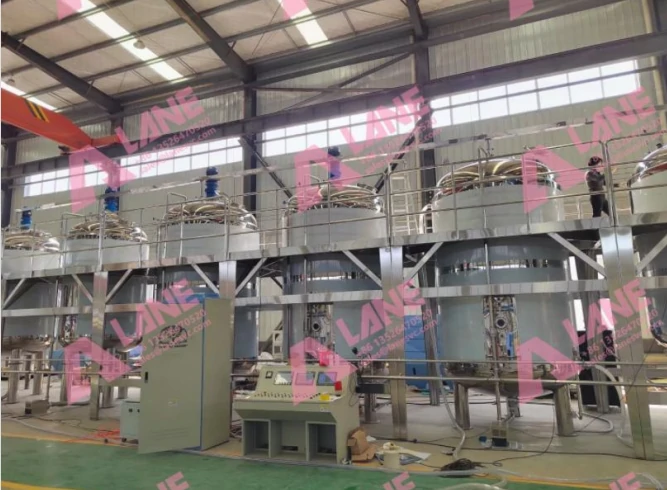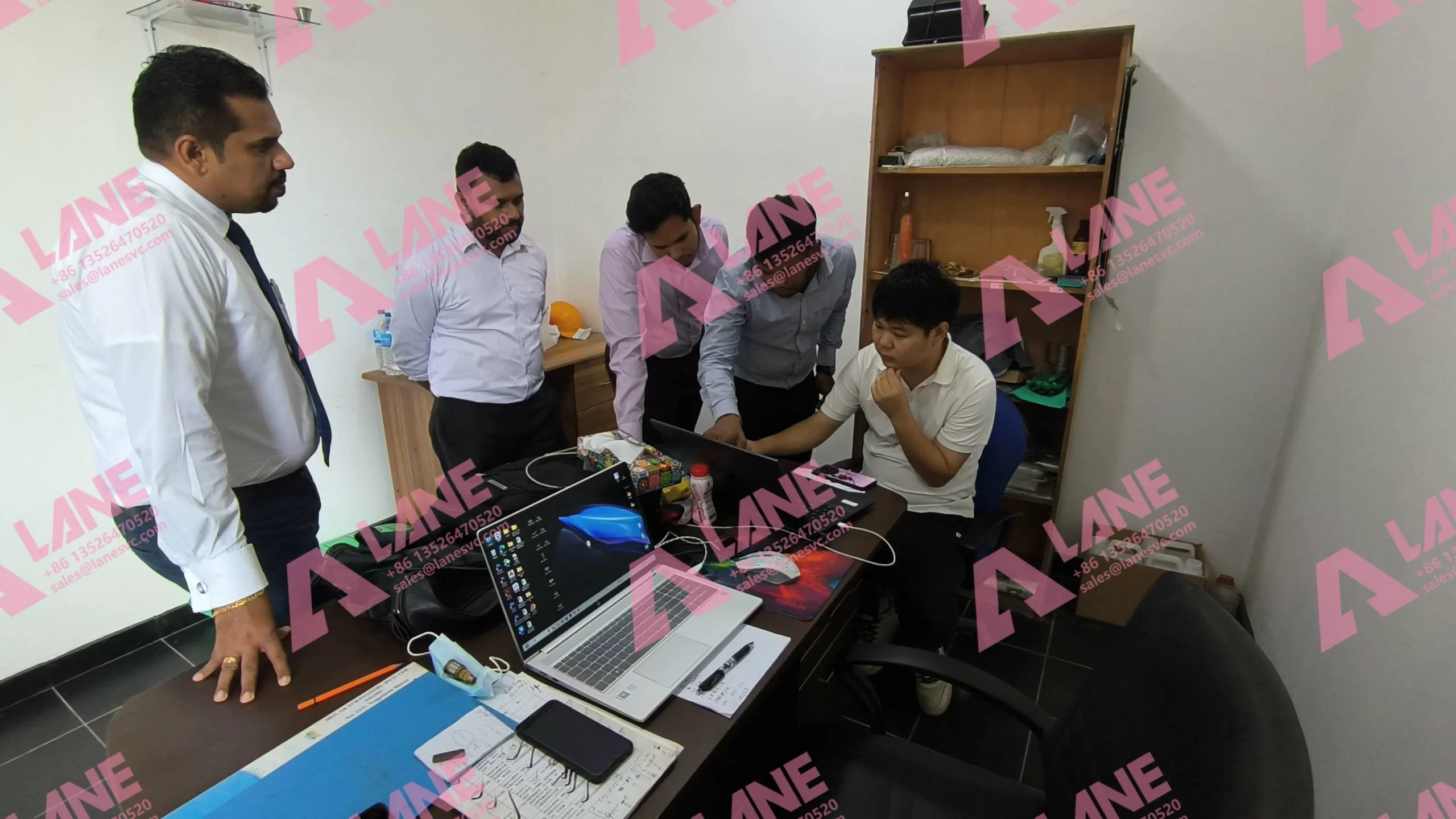
The Growing Liquid Fertilizer Market in India: Opportunities, Challenges, and Modern Production Solutions
The liquid fertilizer market in India has witnessed tremendous growth over the past decade, driven by the need for sustainable farming practices, efficient nutrient delivery, and the country’s ever-growing agricultural demand. As Indian farmers shift toward high-value crops and precision agriculture, liquid fertilizers have become an increasingly important part of the nation’s crop nutrition strategy.
This article explores the development trends of the liquid fertilizer market in India, its key drivers, challenges, production processes, and how modern equipment manufacturers like LANE Heavy Industry support the sector with advanced production solutions.

India is the world’s second-largest agricultural producer, with nearly 60% of its population engaged in farming. Traditionally, Indian agriculture has relied heavily on granular or powdered fertilizers such as urea, DAP, and NPK blends. However, in recent years, there has been a strong shift toward liquid fertilizer usage, especially in regions with intensive horticulture, floriculture, and cash crop cultivation.
According to the Indian Ministry of Agriculture, the liquid fertilizer market in India was valued at approximately USD 3.5 billion in 2023, and it is expected to grow at a CAGR of 7–8% by 2030. This rapid expansion is driven by improved irrigation infrastructure, the rise of fertigation systems, and increased awareness of soil health and sustainable farming.
The shift toward liquid fertilizers is not accidental—it’s a direct result of several agronomic and logistical advantages.
| Advantages | Details |
| Fast Nutrient Absorption | Nutrients are readily available to plants through roots or foliar application. |
| Uniform Application | Easily mixed and distributed through irrigation systems (fertigation). |
| Improved Efficiency | Reduces nutrient losses due to leaching and volatilization. |
| Custom Formulations | Farmers can tailor NPK ratios and add micronutrients for specific crops. |
| Compatibility | Suitable for modern irrigation systems such as drip and sprinkler setups. |
Farmers in Maharashtra, Punjab, Gujarat, and Tamil Nadu have increasingly adopted liquid fertilizers for high-value crops like grapes, pomegranates, sugarcane, and vegetables. The local government also organized the establishment of a liquid fertilizer production line. These crops respond better to precise nutrient management, leading to higher yields and better produce quality.
The liquid fertilizer market in India includes a wide range of products catering to different crop stages and soil conditions.
| Category | Examples | Application |
| Nitrogen-based | Urea Ammonium Nitrate (UAN), Ammonium Sulfate Solution | Used during vegetative growth stages |
| Phosphorus-based | Phosphoric Acid-based solutions | Essential for root development |
| Potassium-based | Potassium Nitrate, Potassium Sulfate solutions | Enhances fruiting and stress resistance |
| Micronutrient Solutions | Zinc, Iron, Manganese chelates | Correct nutrient deficiencies |
| Organic Liquid Fertilizers | Compost tea, fish protein hydrolysate, humic acid | Sustainable alternative for organic farming |
The organic liquid fertilizer segment is growing especially fast, supported by India’s National Programme for Organic Production (NPOP) and growing consumer demand for chemical-free food.
The production of liquid fertilizers requires precision, cleanliness, and stable formulation. LANE Heavy Industry has supplied several complete liquid fertilizer production lines across Asia, including India, Indonesia, and Malaysia.
A typical liquid fertilizer production process involves the following key stages:
Raw Material Preparation
Materials such as urea, phosphoric acid, potassium chloride, amino acids, or organic extracts are measured according to formula requirements.
Dissolution and Mixing
Using stainless steel mixing tanks with agitation systems, raw materials are dissolved into water under controlled temperature and pH conditions.
Filtration and Homogenization
The mixture passes through fine filters to remove undissolved impurities, ensuring product uniformity.
Storage and Aging
The solution is stored in liquid holding tanks for stabilization. Anti-caking or anti-foaming agents may be added.
Filling and Packaging
The final product is packaged using automatic liquid filling machines in bottles, barrels, or bulk containers, ready for market distribution.

Despite the optimistic growth, the liquid fertilizer market in India still faces some structural challenges:
Challenges
High Initial Setup Costs: Advanced production equipment and fertigation infrastructure require investment.
Limited Awareness: Many smallholders remain unfamiliar with the advantages of liquid fertilizers.
Transportation Costs: Liquid fertilizers are bulkier and costlier to transport than dry ones.
Shelf Life Issues: Certain formulations may require stabilization agents to prevent precipitation.
Opportunities
Government Support: Schemes promoting micro-irrigation and organic agriculture are boosting adoption.
Export Potential: Indian manufacturers are beginning to export to Southeast Asia and Africa.
Technological Integration: Use of IoT-based fertigation systems and precision dosing creates new markets for liquid fertilizers.
Sustainability Appeal: Liquid organic fertilizers derived from compost, fish waste, or seaweed are attracting eco-conscious buyers.
In 2023, LANE Heavy Industry partnered with an agritech company in Gujarat to install a 2 tons per hour liquid fertilizer production plant. The plant uses molasses and amino acids as organic nitrogen sources, producing nutrient-rich fertilizer for export and domestic use.
The fully automated system includes:
Stainless steel mixing and heating tanks
Dual-stage filtration unit
PLC-controlled filling line
After six months of operation, the company reported:
30% lower production cost compared to manual blending
Consistent product quality and longer shelf life
Expansion into neighboring states like Maharashtra and Rajasthan
This project reflects how Indian agribusinesses are embracing modern production systems to meet the rising demand for liquid fertilizers efficiently and profitably.
Q1: What crops benefit most from liquid fertilizers in India?
A: High-value crops such as grapes, tomatoes, sugarcane, cotton, and floriculture crops respond best to liquid nutrient feeding.
Q2: Are liquid fertilizers more expensive than traditional ones?
A: The cost per unit may be slightly higher, but their efficiency and uniform absorption often make them more economical overall.
Q3: Can farmers produce liquid fertilizer locally?
A: Yes, small-scale liquid fertilizer plants can be established with modular equipment like those designed by LANE, using organic waste or chemical raw materials.
Q4: Is there government support for liquid fertilizer adoption?
A: Yes, several Indian states provide subsidies and technical assistance for fertigation and organic fertilizer projects.
The liquid fertilizer market in India stands at a critical turning point—balancing the nation’s agricultural intensity with environmental sustainability. With increasing awareness, technological progress, and supportive government policies, India is expected to become one of the leading producers and consumers of liquid fertilizers in Asia.
Through reliable equipment, expert engineering, and customized plant designs, LANE Heavy Industry continues to help Indian manufacturers and farmers produce high-quality, efficient, and sustainable liquid fertilizers that power the next generation of farming.

For more details, please feel free to contact us.
Henan Lane Heavy Industry Machinery Technology Co., Ltd.
Email: sales@lanesvc.com
Contact number: +86 13526470520
Whatsapp: +86 13526470520
Leave a Comment
Latest Posts
LANE has more than 500 successful cases and is committed to providing customers with first-class solutions, high-end machinery and equipment, and one-stop pre-sales, sales and after-sales comprehensive customer service.